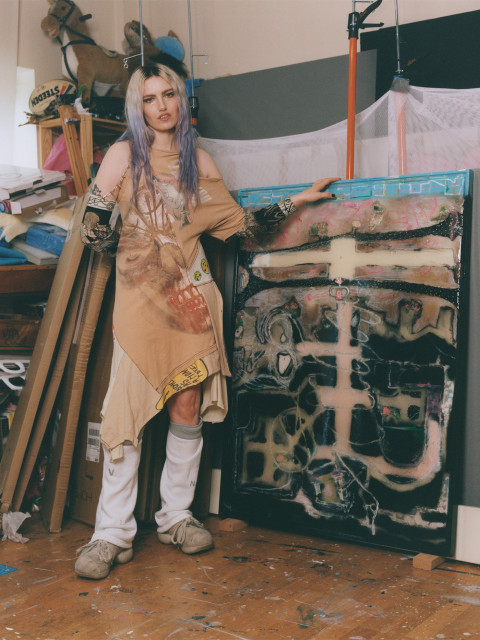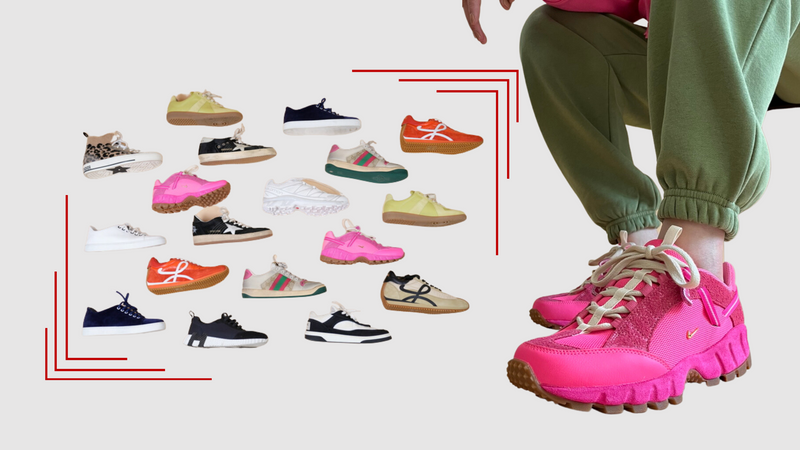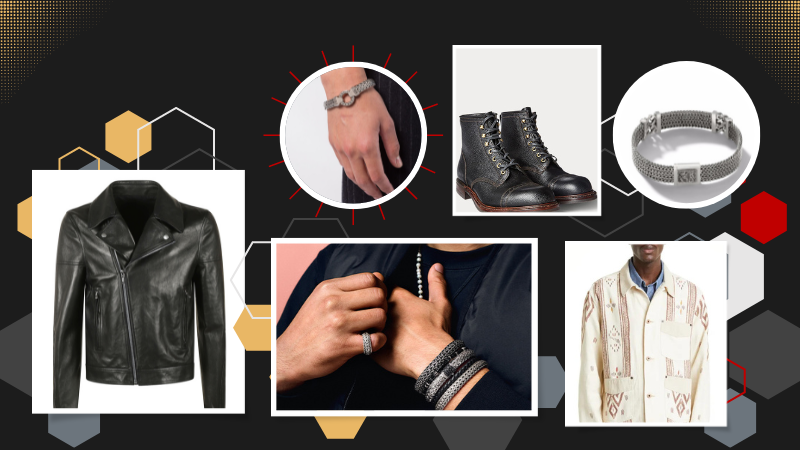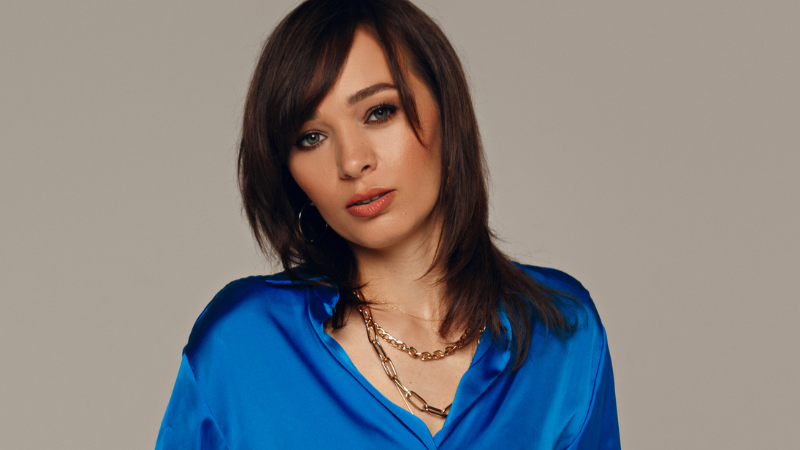Dystopian Affirmations: Claire Barrow on Listening to the Universe, Not Fashion
From Rihanna to Bladee, to TikTok filters, the world of the visual artist and designer is a trip worth taking.

The fashion industry spotlight found Claire Barrow in the final years of her BA in fashion at the University of Westminster in London. It was the start of the 2010s, the beginning of an era in which fashion became very online. Rihanna’s stylist at the time, Mel Ottenberg, spotted Barrow’s work on Tumblr and snagged a customized leather jacket, which can be seen in promo photos for . Stylists for editorials in and sought pieces from the Yorkshire-born talent before she graduated. Despite her London Fashion Week debut with Fashion East, courtesy of Lulu Kennedy, Barrow was hesitant to let the industry’s attention define her creative practice: “Ultimately, I feel that the six-month seasonal fashion system just wasn’t working for me and I needed to get out of it fully to submit to my creative potential. For a while, I thought that because I loved style and clothes, my medium should be purely fashion collections,” she explains. “But I’ve realized that not everything can be said with clothing.”

More recently, Barrow has managed to channel the popularity of her fashion week debut into sustaining a practice that sits closer to visual art, with paintings and sculptures released according to her own rhythm. Sometimes her intuition leads her to create screen-printed garments—her iconic hoodies, for example—sometimes to the digital sphere, like her rogue 3D-mystery website. Sometimes she makes artwork with Bladee, of Drain Gang. Most recently, she finds her expression in the sculptures and paintings in fabric, clay, pigment, and sand, like her recently exhibited solo show, , hosted in an abandoned office building in London.Fascinated by the power of fashion, she maintains somewhat of a distance by keeping out of the mainstream and moving steadily toward the creepy, experimental, and undefinable. In particular, seeing through the pretenses of marketing and industrial production, she turns her focus to the faux empowerment used for promoting beauty standards.From her studio, between her sculptures that sloganeer with quotes from Khloé Kardashian and Pinterest, Barrow discusses the unique topography of her work.
Last week you opened a huge solo exhibition in London with just a few days’ notice—what moved you to want to show these sculptures? Is spontaneity a part of it?
I organized the show in an abandoned office space near my house, and the venue only confirmed at the last minute so I wasn’t sure if it was even happening until a few days before. But it’s a body of work that I’ve been doing for quite a while now, actually!I like to show my work in spaces that give an all-encompassing experience as they bring people together in unexpected ways because of the emotions and memories spaces evoke. This space was abandoned during the pandemic; it has these overgrown vines on the windows and even a mattress in the corner, so it brings you right back to that time. I’ve also put on solo shows in the Hackney Marshes during the lockdown, and I had an exhibition in Soft Opening’s gallery in Piccadilly Circus tube station in 2018. My website was also built to simulate these kinds of repurposed spaces in a sort of 2000s 3D game aesthetic.Spontaneity and superstition play quite a big part in my practice and my life. I try to embrace the accidents or time constraints as powerful signals from the universe, to detect or dictate when something is finished. Recently I’ve even used timers when doing paintings, so I don’t hyperfocus on tiny details and keep the bigger picture in mind.My upbringing has instilled this northern English hardworking ethic into me, so I don’t mind if sometimes things feel a bit off and unfinished as long as time has been spent. I think it can be rewarding for the viewer to feel that awkward pushback or feel connected with the processes used.


Princess-print fabric, makeup pigment, sand, metal—how did these materials find their way into your practice?You painted quotes on the sculptures in reverse, so we can only read them through the reflection in the mirror. Where did they come from—the words and the mirrors? In what way is writing part of your practice?
Leaving things up to chance in finding materials around me as a way of being able to push my process forward and keep it in my current state of mind. To gamify everything a bit.I find a lot of things on the street around Hackney and there is this big bin room in my building where I find a lot of stuff. The princess-print fabric is from Oxfam Dalston, then I did drag makeup on each princess based on other people’s Instagram tutorials.So when the algorithm was pushing all these makeup videos onto my Instagram Explore page for years, slowly giving me body dysmorphia—I’ve spoken to friends, and they feel the same—I started to research the feeling the inauthentic self-care movement gave me: makeup packaging, the human process of making products, the sales tactics, the promotion, all that goes on behind modern beauty standards. And packaging is the biggest user of plastic, which illustrates how we are active participants in the demise of the world.And this all started to influence my new body of work, . Kind of a sad theme: It relates to fashion too, and how women’s interests aren’t taken as seriously.Some of the quotes on the backs of the pieces are directly taken from makeup bags sold on the Boots website, Etsy, and eBay. They tend to be mantras or slogans with slight dystopian affirmations relevant to the beauty industry. Looking in the mirror to see yourself looking for something and then you catch a glimpse of yourself: Maybe it makes you reassess the feelings you have towards your face. The mirror removes that filter that your phone has; when we see our flaws, we are reminded of our mortality.


How do you consume media? Do you think it influences your art?Something that really made me understand your work is when you told me you hope to design theme parks and haunted houses one day. Why do you think that is?If your garments or sculptures were edible, what would they taste like?
I am inhaling media all day while working: music, podcasts, YouTube, and every time I eat I watch something: film or TV. Recently I’ve been an avid reality TV watcher, anything Andy Cohen–affiliated. I’d definitely like to keep exploring this more in future works... This fake-real reality, and also the way people communicate and use manners against each other really interests me.I’d love to design a ghost train incorporating modern fears and anxieties, mixed with some of the kitsch elements that make them great already.Sand.


The spotlight was on you in the fashion industry very early on, at the end of your BA, with major media and celebrity shoutouts—what did you learn from that period of your practice?How has your process changed since then?I get the sense that you’ve been bored of being asked the question of the boundary between what art is and what fashion is. What do you think people were not getting when they kept asking you that?
There’s so much! But ultimately, I feel that the six-month seasonal fashion system just wasn’t working for me and I needed to get out of it fully to submit to my creative potential. I learned I need time to think things over and that my best work usually isn’t rushed. Some designers totally thrive in this environment, but I didn’t. Partly, it was that I was doing so much and hand-painting a lot of the garments, as well as producing everything in London and designing alongside that process. For a while, I thought that because I loved style and clothes, my medium should be purely fashion collections. But I’ve realized that not everything can be said with clothing and sometimes you need to use a different surface.Well, now I have my art practice too—this mainly consists of painting and sculpture. I release wearable items which I sell on my site, and they come out whenever they are ready. It’s slow fashion, or an artwork in itself. The hoodie or T-shirt is the canvas. I’m interested in changing surfaces, whether it’s customizing clothes or filling a canvas.I feel like the main difference between fashion and art is to do with business, otherwise, both mediums are totally free. I’m not sure why people keep asking me that thinking that I know it all. I don’t!




